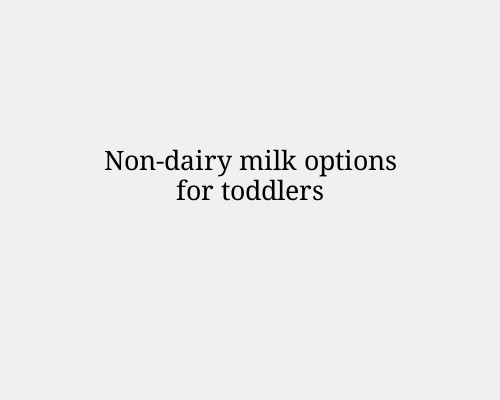
Here’s a breakdown of non-dairy milk options for toddlers — including nutrition, safety, and what to watch for — since not all plant milks are created equal for little ones.
Best Non-Dairy Milk Choices for Toddlers (12+ months)
(Always choose unsweetened, fortified versions unless advised otherwise by a doctor)
Milk Type Pros Cons / Watch For
Fortified Soy Milk
Closest nutrition to cow’s milk (protein + fat + calcium), widely available, often fortified with vitamin D & B12.
Some kids dislike taste; possible allergen.
Fortified Oat Milk
Creamy texture, often well-accepted; fortified with calcium & vitamin D; gluten-free if certified.
Lower protein than soy (unless fortified with protein); can be higher in carbs.
Fortified Pea Protein Milk
Good protein (similar to cow’s milk), creamy; usually fortified with calcium & vitamin D.
Less common, may be pricier.
Fortified Almond Milk
Low calories, fortified with calcium & vitamin D; mild taste.
Very low protein; possible allergen.
Fortified Coconut Milk (carton)
Creamy, good for cooking; fortified options available.
Very low protein; higher in saturated fat; not the same as canned coconut milk (too high fat for daily drinking).
Hemp Milk
Some protein, contains omega-3 fats; often fortified.
Taste can be earthy; less available.
Rice Milk Mild taste; fortified versions exist.
Very low protein; higher in sugars; possible arsenic concerns for young children (limit use).
Key Tips for Toddlers
Under 12 months: Stick to breastmilk or infant formula — plant milks aren’t nutritionally complete for this age.
From 12 months: If replacing cow’s milk, choose a protein-rich, fortified option like soy or pea milk.
Fortification matters: Look for at least:
Calcium ~120 mg per 100 ml
Vitamin D (~1–1.5 mcg per 100 ml)
Protein ≥ 3 g per 100 ml is ideal
Rotate types: Mixing up milks (e.g., soy + oat) adds variety and nutrient diversity.
Watch added sugars: Choose unsweetened to avoid extra sugar in your toddler’s diet.
Balance the diet: Since many plant milks are low in protein and fat, make sure toddlers get these from foods like beans, lentils, tofu, nut butters, avocado, eggs (if no allergy), and healthy oils.